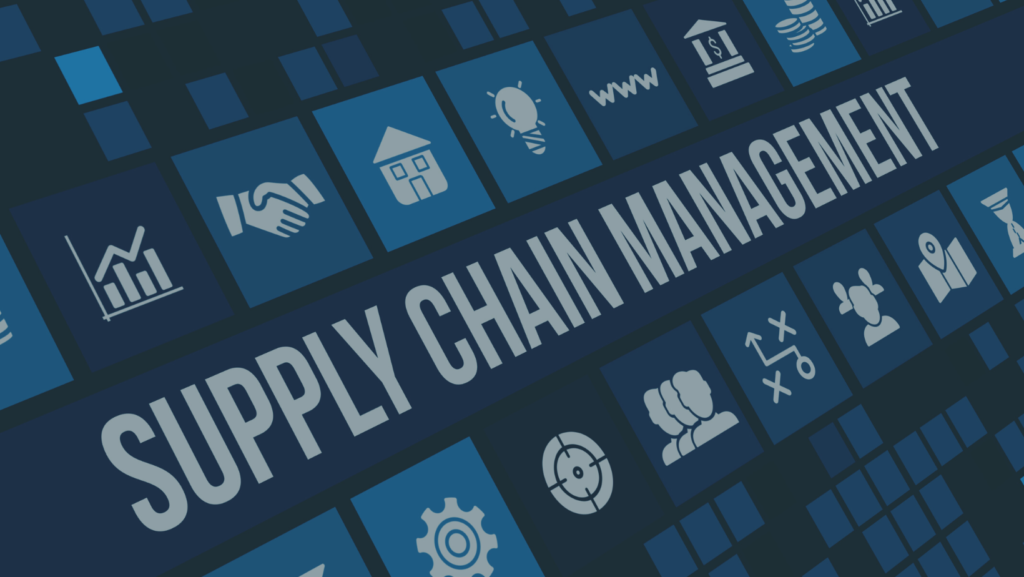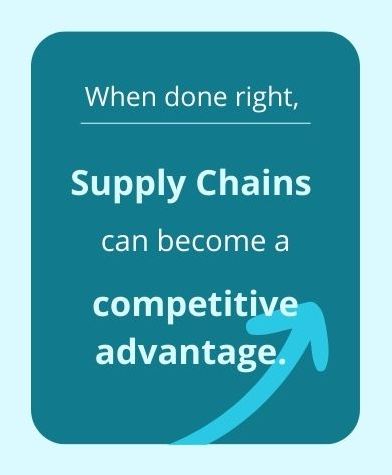Take the pain away: Supply Chain Simplified
Take the pain away: Supply Chain Simplified
Press play for an Audio version of the blog! 🎧

Supply chains are transforming the way we do business in numerous ways. They help to enhance efficiency, improve customer experience, adopt new technologies and innovations, incorporate sustainable practices, and collaborate with partners.
Whether you’re a supply chain professional, a business owner seeking operational improvements, or simply curious about the inner workings of supply chains, this blog is your go-to resource; we’ll talk about why supply management is important, its main issues, and trends.
What is a Supply Chain?
First, a Supply Chain refers to the network of organizations, individuals, activities, resources, and technologies involved in the production, distribution, and delivery of goods or services from the point of origin to the point of consumption. In other words, it includes all the processes involved in transforming raw materials into finished products and delivering them to end customers.
Its main objective is to efficiently meet customers demand while minimizing costs and maximizing value, creating a competitive advantage. It involves careful planning, execution, and optimization of key activities such as procurement, production, inventory management, logistics, demand planning, supply chain visibility, collaboration, and communication.
Why is Supply Chain Management important?
Supply Chain Management is important for several reasons, the 5 main ones are:

1.Improved efficiency and risk management:
Effective supply chain management helps streamline processes, eliminate inefficiencies, and reduce costs throughout the entire supply chain. By optimizing the flow of materials, information, and resources, businesses can achieve operational excellence, maximize productivity and mitigate disruption related to natural disasters, geopolitical issues, or supplier failures, which can have a severe impact on business operations.

2. Customer Satisfaction:
It guarantees that products or services are delivered to customers promptly, meeting their expectations and demands. By minimizing delays, stockouts, and order inaccuracies, businesses can increase customer satisfaction, loyalty, and retention.

3. Cost Reduction
Supply chain management focuses on cost optimization by identifying areas for improvement, eliminating waste, negotiating favorable terms with suppliers, minimizing inventory holding costs, transportation expenses, etc, significant cost savings can be achieved.

4. Collaboration and Partnerships:
Building strong relationships and effective communication channels within the supply chain ecosystem fosters collaboration, drives innovation, and enables businesses to respond quickly to market changes.

5. Sustainability
By integrating environmentally friendly practices, ethical sourcing, and social responsibility considerations, companies can reduce their environmental impact, meet regulatory requirements, and appeal to socially conscious consumers.
Main Supply Chain Issues
Supply chains can face several common challenges and issues that impact their efficiency and effectiveness. Here are the top six challenges that supply chains face more often:
1. Limited visibility
Limited visibility across the supply chain can lead to inefficiencies, delays, and difficulties in anticipating and responding to disruptions. Without real-time information, businesses may struggle to make informed decisions and optimize their operations.
2. Optimal inventory
Achieving optimal inventory levels to meet customer demands while minimizing holding costs is a perpetual challenge as it requires accurate demand forecasting. Overstocking can tie up capital and increase storage costs, while understocking can lead to stockouts and customer dissatisfaction.
3. Demand forecasting
Precise demand forecasting is crucial for supply chain planning, production scheduling, and inventory management. However, forecasting can be challenging due to unpredictable market dynamics, changing customer preferences, and external factors.
4. Supply chain disruptions
Supply chain disruptions can arise from various sources, including natural disasters, geopolitical events, supplier bankruptcies, global pandemics, or transportation disruptions. These disruptions can lead to delays, increased costs, and disruptions in the flow of goods and services. Building resilience and contingency plans to mitigate the impact of disruptions is essential.
5. Sustainable and ethical practices
Businesses face pressure to adopt sustainable and ethical practices in their supply chains. This includes responsible sourcing, reducing environmental impact, ensuring fair labor practices, and adhering to regulatory standards. Balancing sustainability goals with cost and operational efficiency is a significant challenge.
6. Advancements in technology
Finally, rapid advancements in technology, such as automation, data analytics, and blockchain, present both opportunities and challenges for supply chains. Integrating and leveraging these technologies effectively can enhance supply chain visibility, efficiency, and decision-making. However, adapting to new technologies and managing data security and privacy can be complex.
Addressing these issues requires proactive planning, continuous improvement, and collaboration among partners. By adopting best practices, leveraging technology, and fostering strong relationships, businesses can overcome these difficulties and build resilient and agile supply chains.
How can Supply Chains bring value to your business?

Supply chains play a crucial role in bringing value to businesses. They can help optimize costs, improve customer service and satisfaction, support business expansion into new markets or geographic regions, mitigate risks, and generate a competitive advantage.
They enable companies to differentiate themselves by offering faster delivery, higher product quality, or more responsive customer service. This differentiation can attract more customers and win market share from competitors.
Best Trends to look for
Over the past couple of years, supply chains basically have experienced frequent and significant disruptions. Before 2020, supply chains were mostly unnoticed by the general public. However, the emergence of COVID-19 and other disruptive events caused major disturbances, exposing the delicate balance of the system.

As a result an increasing number of multinational corporations are embracing the digital transformation within their supply chains, with a projected estimate that at least 50% of the companies will incorporate artificial intelligence (AI), advanced analytics, and the Internet of Things (IoT) into their supply chain operations by 2023 and 2025. By leveraging advanced algorithms, these organizations can continuously analyze and adjust their strategies to optimize decision-making, effectively balancing factors such as profitability, service quality, risk management, and sustainability.
The main trend is The Virtual Replica, a digital representation of the physical supply chain, which provides a constantly accessible reference model for guiding operational, tactical, and strategic plans. It allows for comprehensive visualization of all existing nodes, flows, and policies within the supply chain.
In conclusion, effective supply chain management is vital for businesses to thrive in today’s dynamic and competitive market. A well-optimized supply chain can provide numerous benefits. By embracing digital transformation and leveraging technologies such as AI, advanced analytics, and IoT, businesses can unlock new levels of efficiency.
As supply chains become increasingly complex and interconnected, the importance of effective supply chain management cannot be overstated. Businesses that prioritize optimizing their supply chains will be better positioned to navigate disruptions, meet customer expectations, seize new opportunities, and ultimately achieve long-term success in today’s rapidly evolving business landscape.
See you on the next blog! -The Innormax Team
If you’re interested in learning how an ERP system could further help optimize your supply chain, you can always get in contact with us!

